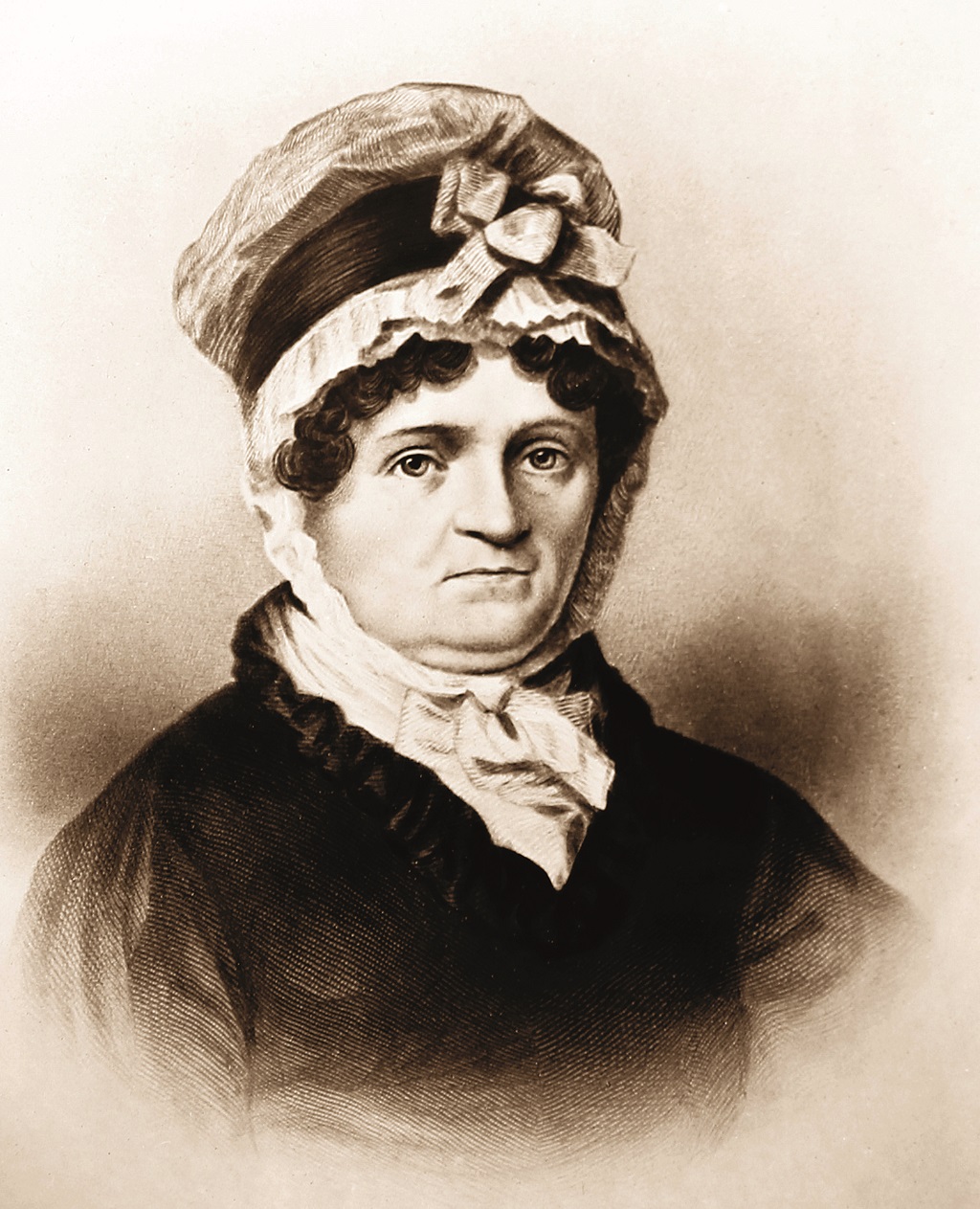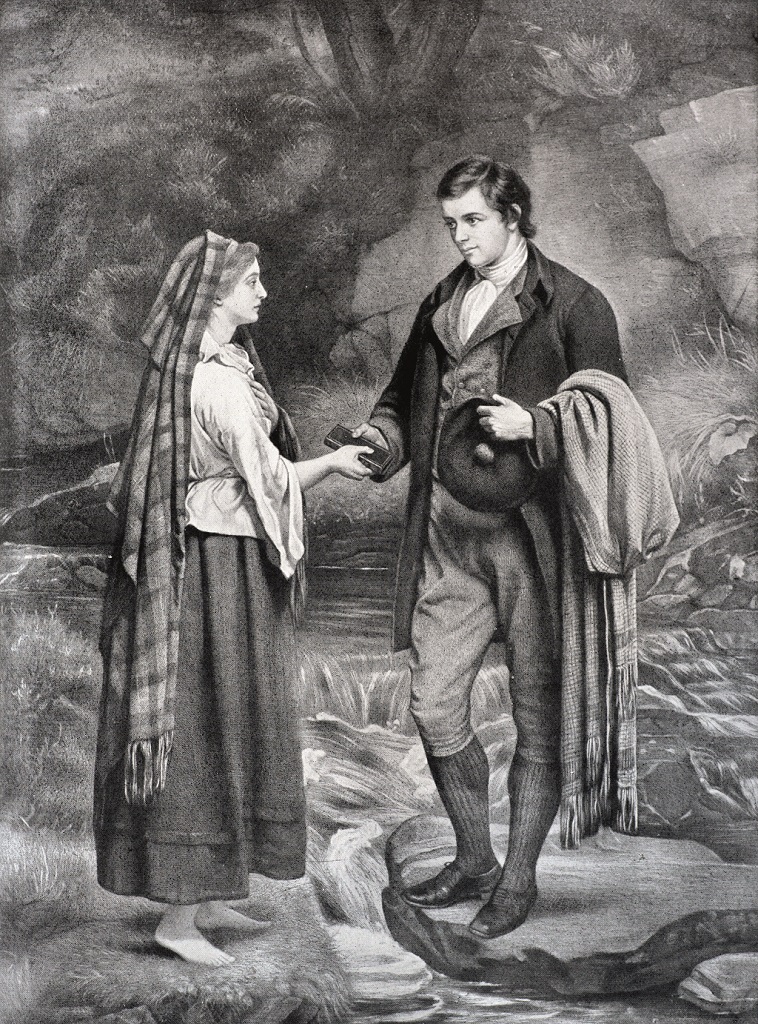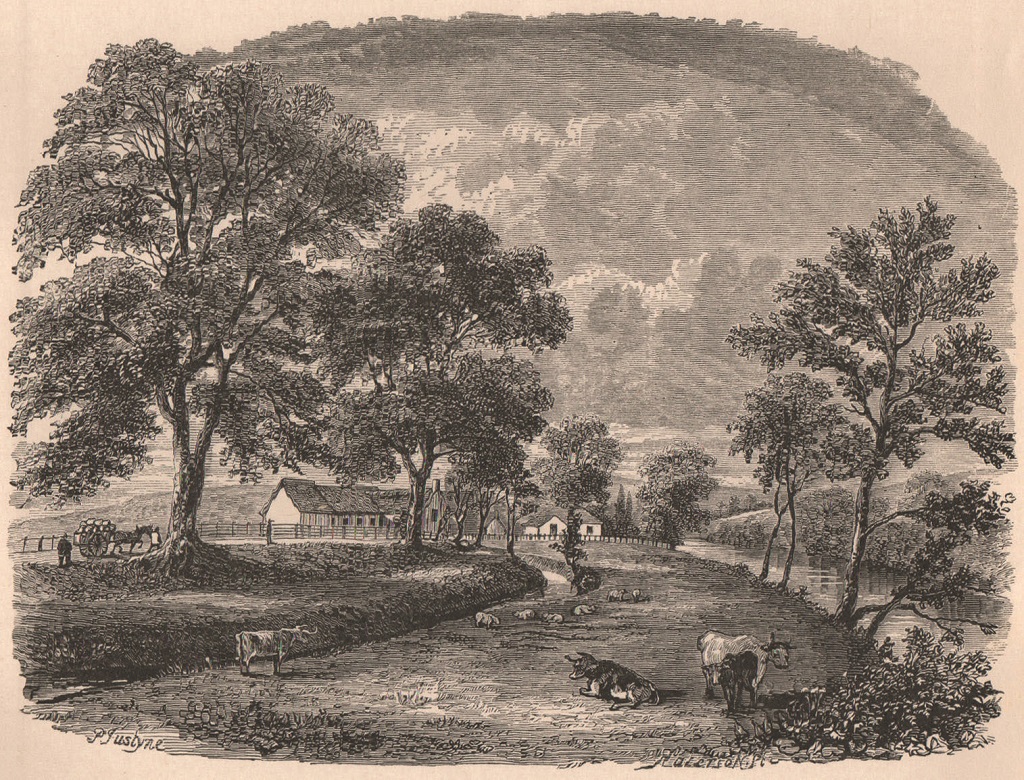We remember the women who became muses to Scotland’s national bard and consider whether Rabbie Burns was more of a rascal or romantic at heart
MORE FROM SCOTLAND MAGAZINE
Alongside Hogmanay’s midnight anthem, Auld Lang Syne (1788), and his humorous Address to a Haggis (1786), Burns’ love song A Red, Red Rose (1794) is among his most popular lyrics, able to capture the ferocity of a love that does not lessen over time: “O my Luve’s like a red, red rose,/ That’s newly sprung in June”. In fact, many of the bard’s poems possess this enduring quality, succinctly and simply summing up the highs and lows of relationships even today. The same cannot be said of Robert Burns’ love life, however, which was far more volatile and convoluted.
Son to tenant farmer William and his wife, Agnes, Burns was born in the south Ayrshire village of Alloway, where he lived in a thatched cottage just around the corner from where the Robert Burns Birthplace Museum is now situated. At seven years old, the family moved to Mount Oliphant Farm, where Burns was expected to pull his weight. It was while working at harvest time here that the seed of Burns’ passion for the other sex was first sown. His muse? Helen Kilpatrick, daughter of miller Allan Kilpatrick, who was assigned as 15-year-old Burns’ field partner. Fittingly, Burns’ first love inspired his first poem, Handsome Nell (1774). In it he sweetly surmises that female innocence and modesty are more desirable than beauty: “Her reputation is compleat,/ And fair without a flaw”.

Alas this naive encounter was soon superseded by a series of love affairs that wouldn’t be out of place in a soap opera. Burns had his first illegitimate child with his family’s servant, Elizabeth Paton, who was employed during the winter 1783-4. At this point they were farming at Lochlea near Tarbolton, where they moved in 1777. Paton bore him a daughter, “dear-bought Bess”, thought to be the subject of A Poet’s Welcome to his Love Begotten Daughter (1784). With Burns’ poetic potential starting to shine through, although Burns’ mother encouraged Burns to do the right thing and marry Paton, his siblings were in disagreement, believing that Burns was their ticket out of poverty. Indeed, in July 1786 Burns’ first major collection of poems, Poems, Chiefly in the Scottish Dialect (otherwise known as the Kilmarnock Edition) was published to critical acclaim – it sold out within a month.
So, what happened to Paton and her daughter? The Robert Burns Birthplace Museum’s learning manager, Chris Waddell’s understanding is reassuring: “Elizabeth eventually married a farm servant and took a payment of £20 from the profits of the Kilmarnock Edition in 1786.” Meanwhile, the child was looked after by Burns’ mother for a time.

That said, the whole affair left a bitter taste in the 26-year-old Burns’ mouth, largely owing to the fact that the church likely censured the couple’s behaviour: there would have been a monetary fine and public apology before the congregation. Burns’ poem The Fornicator (1785) was his response: “Ye jovial boys who love the joys./ The blissful joys of Lovers;[…] Pray draw near and lend an ear,/ And welcome in a Prater,/ For I’ve lately been on quarantine,/ A proven Fornicator.” Burns’ defiant tone suggests that this was just the beginning…
As his first child was being born, Burns was courting another woman, Jean Armour, a muse that would be more constant in Burns’ life than any other. They supposedly met at a dance in April 1784 and before 1785 was out Armour had fallen pregnant with twins. This time Burns did intend to marry his lover, but when the contract was presented to Armour’s father, James, he tore it up in outrage. Burns was not deemed marriage material, and he went on to prove it by shortly afterwards almost emigrating to the West Indies with another woman, his “Highland Mary”. The subject of his 1786 poems Highland Mary, Highland Lassie, O’ and Will ye go to the Indies my Mary?, the facts about Mary Campbell and Burns’ liaison are, as Waddell describes it, “quite sketchy”.
Waddell says: “They seem to have met sometime in the spring of 1786, when she was working as a nursemaid in the house of Gavin Hamilton in Mauchline, not long after Burns and Jean Armour were forcibly separated.” This puts the couple in close proximity, since after Burns’ father had passed away in February 1784 the family had begun farming in Mauchline, where they stayed until 1788.
“[Burns and Campbell] clearly developed a relationship,” Waddell continues. “It has been speculated that she planned to decant to the Indies with Burns but died – possibly of Typhus – in Greenock in autumn 1786 whilst preparations for that trip were afoot. Further speculation has led some scholars to believe she may have been carrying Burns’ child; the bottom board of an infant’s coffin was discovered in her family plot when her remains were moved due to an industrial development in 1920.”
A sad end for Campbell was at least an upturn in Armour’s fortunes. They were finally married in August 1788 after Armour gave birth to their second set of twins in March. The new family soon moved to Ellisland near Dumfries where Burns had taken a job as an Excise Collector. They had nine children together, though sadly only three survived into adulthood.

This did not mean that Burns’ loyalty had stopped wavering. At a tea-party in Edinburgh in 1787, he had become acquainted with Mrs Agnes Maclehose, who had been separated from her husband for several years. A flurry of love letters written between them over the next four years led to Burns sleeping with Maclehose’s servant, Jenny Clow, who sometimes delivered said correspondence. Clow also fell pregnant and gave birth to a baby boy in November 1788. Maclehose’s response to this is not recorded, but we can guess that she was furious, particularly as their relationship was never consummated.
This wasn’t the only illegitimate child born during Burns’ marriage. While living near Dumfries in 1789, Burns is thought to have met a barmaid, Ann Park, about 10 years his junior, who inspired him to write the love song he claims to have liked the most, The Gowden Locks of Anna (1790). Park gave birth to her and Burns’ child only a few days before Armour gave birth to his first legitimate son. Yet when Park died, her daughter was taken in by Mrs Jean Burns and raised as one of her own.
Fathering at least 12 children by four women, seven of which were illegitimate, is some tally, which may appear shocking to modern eyes. When asked whether Burns’ behaviour was typical of the time, Waddell makes a good point: “I don’t think it would have been especially atypical. Although his behaviour did raise eyebrows and certainly the ire of the fathers of both Jean Armour and Mary Campbell, we have contraception nowadays; Burns didnae.”

Ultimately, Burns did have a heart, and he didn’t break them for fun; he seems as genuinely pained by loss as he was passionate in love. In Ae Fond Kiss (1791), thought to be about his failed relationship with Maclehose, he wrote: “Had we never lov’d sae kindly,/ Had we never lov’d sae blindly!/ Never met – or never parted –/ We had ne’er been broken-hearted.” To which we might add that without Burns’ love life, and his rampant and emotionally-fuelled romantic experiences, we had ne’er such timeless and profound sentiments to share with our loved ones, either.
MORE FROM SCOTLAND MAGAZINE

SCOTLAND MAGAZINE
Published six times a year, every issue of Scotland showcases its stunning landscapes and natural beauty, and delves deep into Scottish history. From mysterious clans and famous Scots (both past and present), to the hidden histories of the country’s greatest castles and houses, Scotland‘s pages brim with the soul and secrets of the country.
Scotland magazine captures the spirit of this wild and wonderful nation, explores its history and heritage and recommends great places to visit, so you feel at home here, wherever you are in the world.